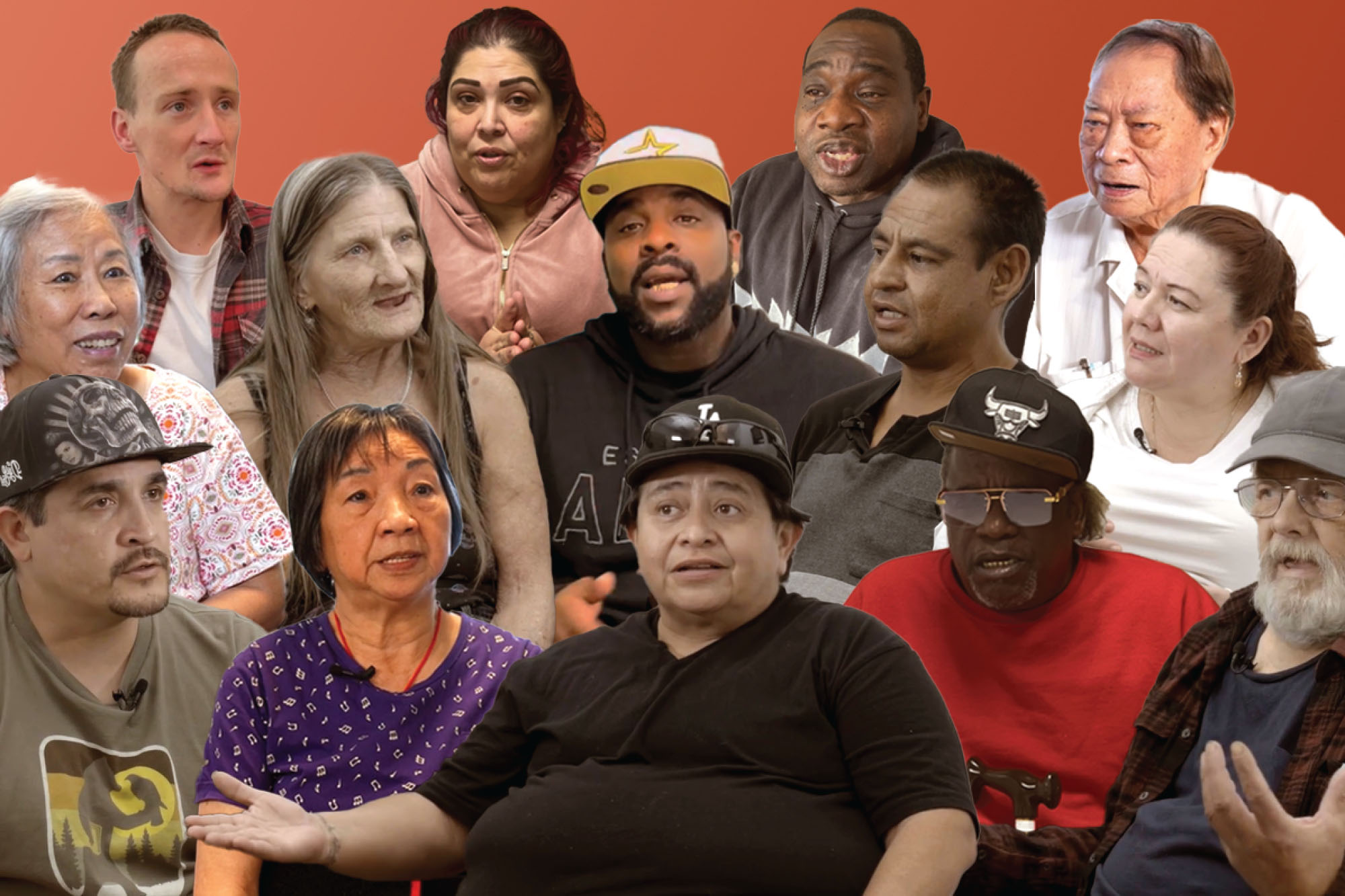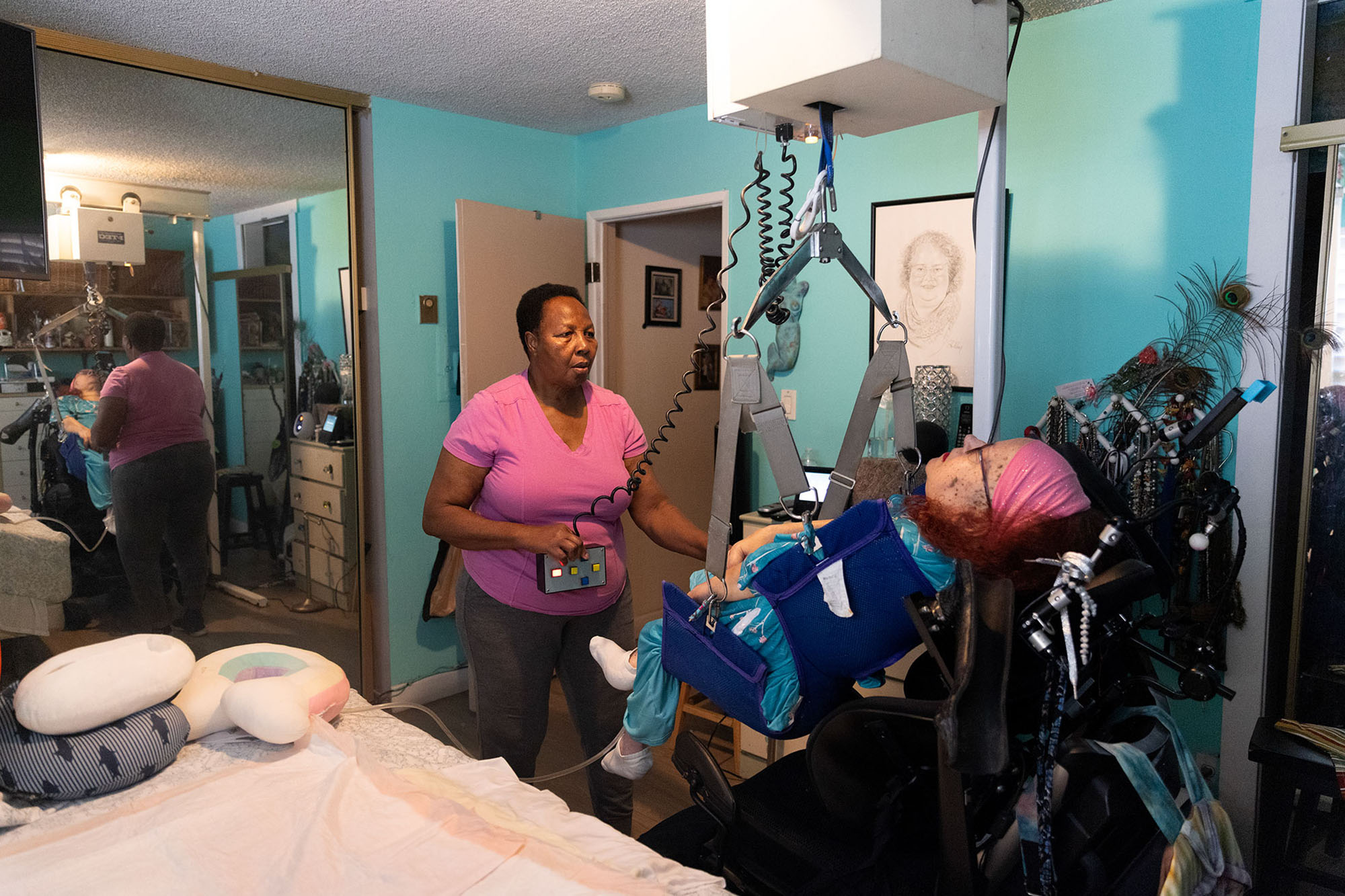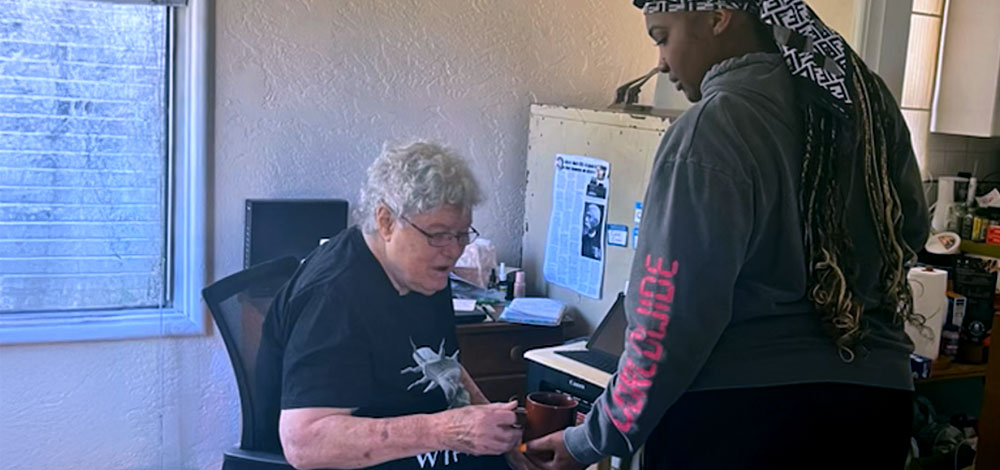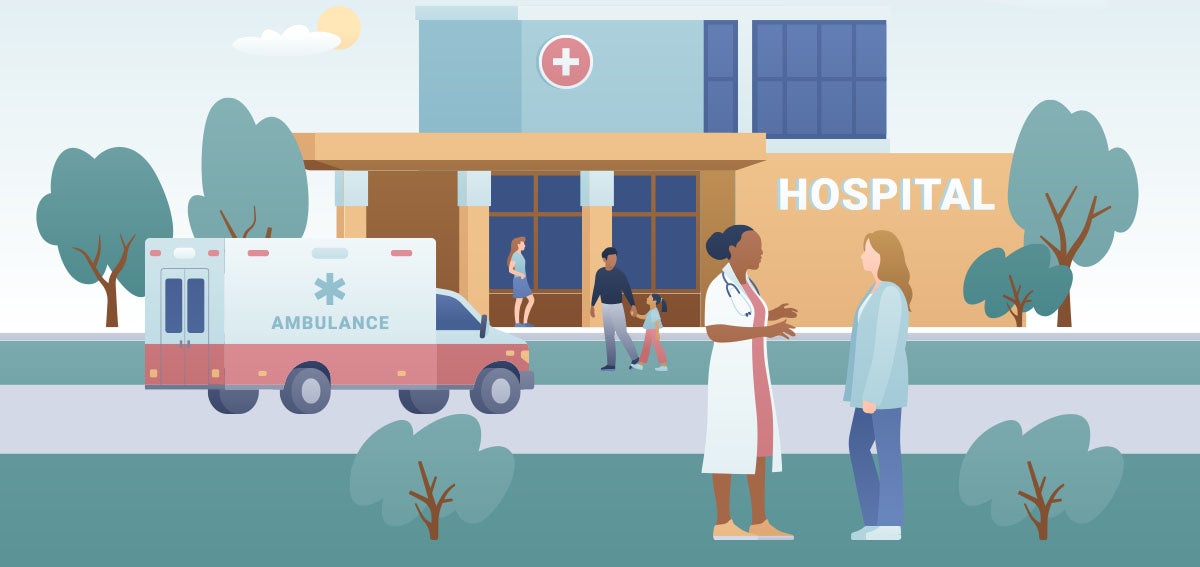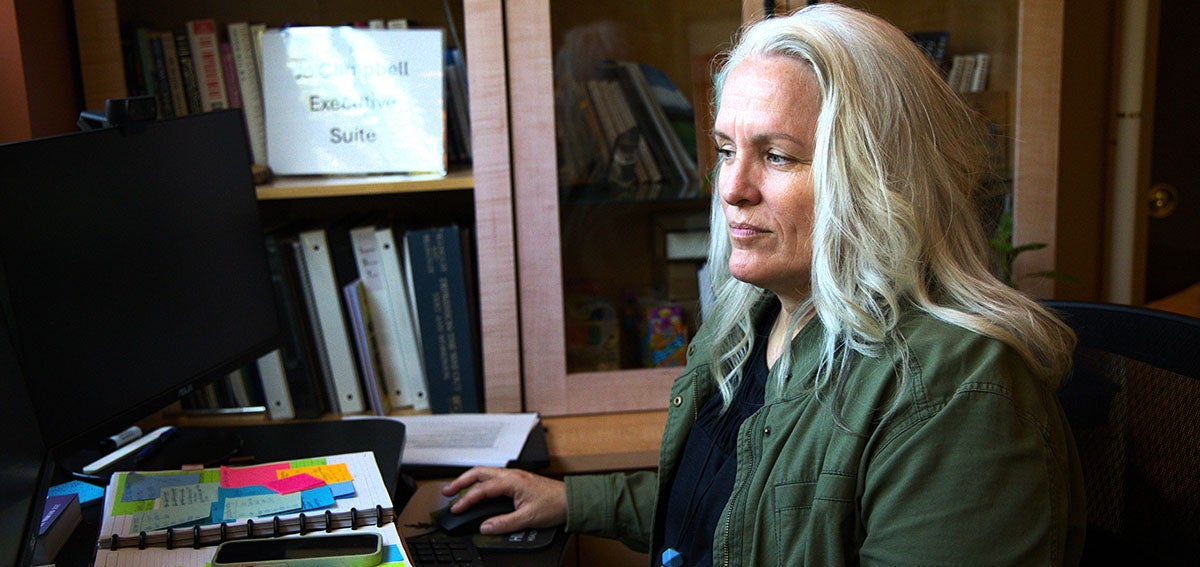View the Report
Jump to All Downloads & LinksWhat Is CalAIM?
California Advancing and Innovating Medi-Cal — known as CalAIM — is a far-reaching, multiyear plan to transform California’s Medi-Cal program and to make it integrate more seamlessly with other social services. Led by California’s Department of Health Care Services, the goal of CalAIM is to improve outcomes for the millions of Californians covered by Medi-Cal, especially those with the most complex needs.
What Are the Goals of CalAIM?
- Make services more standardized and more equitable across the state, bringing consistency to the current patchwork of programs that vary by county.
- Ensure that the Californians who need the most help and support actually get it — by emphasizing proactive outreach to bring people with complex needs into care and offering a “no wrong door” approach to people seeking help.
- Enable Medi-Cal managed care plans to couple clinical care with a range of new nonmedical services. Those services, which will be reimbursed by Medi-Cal, include housing supports, medical respite, personal care, medically tailored meals, and peer supports.
- Require plans and incentivize public health systems to be more responsive, equitable, and outcome focused by:
- Focusing on population health, which involves matching the right patients to the right services at the right time, increasing equity.
- Implementing payment reform to lay the foundation for paying physical and behavioral health providers based on outcomes rather than services.
- Ensuring greater accountability for Medi-Cal managed care plans by requiring them to coordinate access to services provided by counties and community-based organizations.
Who Will CalAIM Help?
While CalAIM’s broad reach is intended to help all Medi-Cal enrollees, many of the reforms focus on improving care for people with the most complex needs. This group includes:
- People with significant behavioral health needs, including people with mental illness, serious emotional disturbance, and/or substance use disorder
- Seniors and people living with disabilities
- People experiencing homelessness who also have
complex physical or behavioral health needs - People transitioning from jail or prison back to the
community who also have complex physical or behavioral health needs - Children with complex medical conditions, such as
cancer, epilepsy, or congenital heart disease - Children and youth in foster care
Timeline for Implementation
The first reforms will start to be implemented in January 2022, and additional reforms will be phased in through 2027. Many of the activities that CalAIM will cover require a waiver approval from the Centers for Medicare & Medicaid Services, and that is expected to be finalized in December 2021. In the meantime, work is actively underway to ensure a smooth transition from existing programs to CalAIM once those first reforms are approved.
How Can CalAIM Improve the Lives of People Enrolled in Medi-Cal?
Alma

Alma lives alone and prioritizes healthy eating and daily exercise to manage her diabetes and heart failure. One day she has a paralyzing stroke and needs intensive rehabilitation, as well as help with cooking, bathing, and managing her medications. She is discharged to a nursing home but wants to return home.
In the current Medi-Cal program, her options for returning home are limited. Her recovery is slow, and she stays in the nursing home for several months. The social security income she relies on goes to paying the nursing home, resulting in the loss of her apartment.
Ultimately, with daily physical and occupational therapy, she gets to the point where she could live independently with the right supports, but she does not have the resources to find and furnish an apartment that can accommodate her needs or locate and hire a caregiver. As a result, the nursing home becomes her home even though she doesn’t need that level of care. Alma develops a bedsore and is in and out of the hospital because the wound keeps getting reinfected. Her Medi-Cal managed care plan is concerned about her frequent hospitalizations, but the plan can’t do much about it because her medical care is covered by Medicare fee-for-service. The staff in the nursing home are worried about her, but the administrator can’t ignore that every time she is discharged from the hospital, the care she gets in the nursing home is reimbursed by Medicare at three to four times the payment they get from Medi-Cal for the first 60 days. A year after her stroke, she’s still living in the nursing home and has spent more than three weeks in the hospital in the last six months.
If CalAIM is successful, Alma will receive a visit from a care manager shortly after her stroke. The care manager will elicit her goals, and working across the Medicare and Medi-Cal benefits (offered by a managed care plan responsible for both), help her get physical and occupational therapy at home, make modifications to her apartment to meet her physical needs, and provide personal care services through an agency until she can find a caregiver through the In-Home Supportive Services (IHSS) program. The care manager will support her changing needs, organizing transportation to appointments, arranging backup care when her usual IHSS worker is unavailable, and working with her primary care physician to help simplify her medication regimen. A year after her stroke, she will be living at home with the care she needs to keep her out of a nursing home or hospital.
Brian

Brian lived in his car before the pandemic, parking it in the lot of the restaurant where he washed dishes. After losing his job and his parents during the COVID-19 pandemic, he sinks into a deep depression. To manage his sadness, he drinks heavily. One night his car is towed, and unable to pay to retrieve it, he starts living on the streets. As his alcohol use worsens, he sometimes loses consciousness in public places.
In the current Medi-Cal program, it is unlikely that Brian will get the treatment he needs for his depression and substance use. When picked up for being publicly intoxicated, he is taken first to the emergency department and then to the county jail, where he can access treatment only if he is willing to be formally diagnosed with depression and alcohol use disorder. He resists those diagnoses and continues to suffer, cycling through short-term jail stays or trips to the emergency room. His managed care plan notices his frequent visits to the emergency department for intoxication but only learns about them when they get a claim from the facility, limiting their ability to act. In addition, the managed care plan finds that he had been disenrolled when his Medi-Cal is suspended because of a jail stay. His criminal justice involvement makes employment and housing further out of reach, driving him deeper into a pattern of depression, alcohol use, and trips to the emergency room and jail.
If CalAIM is successful, Brian will be taken to a sobering center instead of jail or the emergency room. From the center, he will be connected to a care manager to help him find short-term housing. With a safe place to stay and support from the care manager, contracted through his Medi-Cal managed care plan, he’s willing to engage in treatment, which includes peer support. When he experiences a relapse and winds up in the emergency department, his care manager gets a real-time notification and is able to meet him there and support him through the crisis. Eventually, he’s able to get his car back, find work, and transition to subsidized housing. His care manager will introduce him to a social worker at his primary care clinic, providing someone to turn to if he needs help.
Linda, John, and Sophia

Linda and John and their daughter, Sophia, live slightly above the poverty line. Sophia, who lives with asthma, has Medi-Cal coverage, while John and Linda get coverage elsewhere. Linda becomes pregnant and enrolls in Medi-Cal because she is eligible by virtue of her pregnancy. She goes to all of her appointments at a community clinic, and at one of them is diagnosed with high blood pressure.
In the current Medi-Cal program, Linda isn’t enrolled in managed care. She is given a referral to a specialist, and after calling several, is given an appointment in three months, too late to avoid harm to the baby. Born early and small, the baby needs lots of extra care, putting added stress on the family. Sophia’s asthma flare-ups due to wildfire smoke add to the family’s stress, and Linda’s blood pressure remains high.
If CalAIM is successful, Linda would be enrolled in Medi-Cal managed care. Her diagnosis would trigger her managed care plan to find her a specialist appointment within a few days. As a result, Linda’s blood pressure would be treated and the baby would be born almost full term and have fewer needs. The managed care plan would contract with a county case manager to provide high-touch support during and after the baby’s stay in the neonatal intensive care unit, helping connect the family to specialty county and regional center providers. Even after Linda’s Medi-Cal coverage ends, her family would stay on the radar of the Medi-Cal managed care plan. For example, after refilling Sophia’s asthma rescue medication twice in a month, Linda would receive a call from the plan, making sure that the family has access to what they need to stay healthy. If their home needed an air filtration system to reduce exposure to particles from nearby fires, the plan could pay to have that installed.

